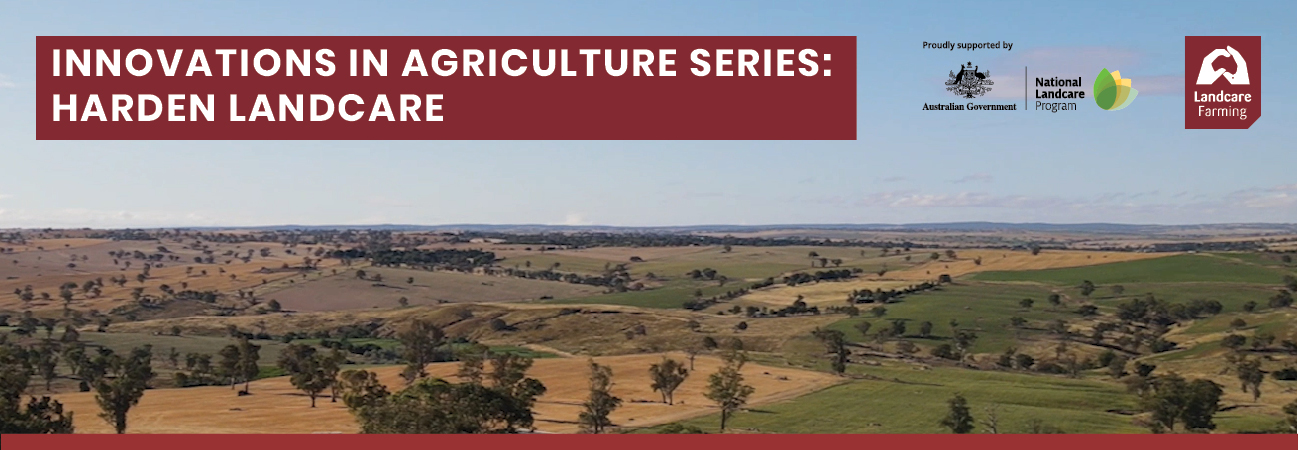
Partnership between scientists and producers leads to improved productivity and sustainability.
Harden Murrumburrah Landcare Group (HMLG) has been working closely with CSIRO scientists to map the soil moisture profile in their region, resulting in increased productivity and sustainability on local farming enterprises.
The ‘Across the Fenceline’ moisture probe project was initially conceived following a long-term CSIRO farming systems trial at the Harden Tillage Trial site on Oxton Park. Led by CSIRO Farming Systems Chief Scientist Dr John Kirkegaard, researchers were investigating the impact of producer land management practices on deep drainage and dryland salinity. To undertake this research, in April 2000, they developed a prototype drainage meter that used the physical principles of soil to measure the downward percolation of excess water below the crop rootzone.
The project established five on-farm paddock sites to compare soil moisture and deep drainage under different management regimes (including stubble retention). However, with the onset of drought quickly impacting the trials, the project soon evolved into exclusively monitoring plant available soil water.
The initial project improved both producers’ and researchers’ understanding of soil moisture in the profile and how best to optimise available moisture, as well as provided the beginnings of a tool for farmers to make informed management decisions around crop, pasture, and soil management. Its success led Dr Hutchison to commercially launch his soil moisture probes, and resulted in Harden Landcare embarking on the ‘Across the Fenceline’ project to map soil moisture through a network of probes across the region.
With the support of CSIRO, Grains Research & Development Corporation (GRDC), the National Heritage Trust and local producers, HMLG installed 18 improved moisture probes across the Hilltops Shire in the winter of 2003. Soil measurements are now collected at each property in two adjacent paddocks, with probes installed 20m on either side of the fence to ensure they are unaffected by firebreaks and headlands.
Moisture probe sensors for the project are buried at least 30cm deep and are connected by underground cable to a solar-powered data logger located at the fenceline. Soil water content measurements at depths of 0.2, 0.5, 0.8, 1.2 and 1.5 metres below the soil surface are then taken every 30 minutes and uploaded online so researchers and local producers are able to observe where moisture occurs in the soil profile as each seasons progresses.
“The progressive data from these probes will inform the success of our current grazing management and to an extent where we can change that management,” said producer and member of Harden Murrumburrah Landcare group Michael Baldry, who operates an 840ha mixed cropping and grazing enterprise in Beggan Beggan. “It can influence how much attention we pay to groundcover, we can regenerate the landscape, create a more sustainable production system and at the same time increase our production outcomes.”
By understanding the moisture profile of their property, producers in the region like Michael are able to determine the water requirements of their crops more accurately and optimise their crop management. The data produced via the moisture probes also aids in crop selection and rotation, allowing producers to optimise yields, reduce the risk of crop failure due to water stress, and strategically rotate crops to allow the soil to recover and maintain its fertility.
“I’ve met some of the farmers that use our [moisture probe] technology and they say it’s one of the most important technologies on their farm now,” Dr Paul Hutchison said.
The success of ‘Across the Fenceline’ has led HMLG to develop more joint research projects, with both scientists and producers recognising the benefits of working together to develop more sustainable farming systems.
“The passion and enthusiasm [HMLG] had is really important for young scientists,” Dr Kirkegaard said. “You’ve got a group of growers working with you and actually trying things on their farm as you’re doing the research on the plots.”
Access Harden Murrumburrah Landcare’s Soil Moisture probe data here: https://www.hmlg.org.au/soil-moisture-probes
This case study was produced as part of the Landcare Farming Innovations in Agriculture Series. Supported by the Australian Government’s National Landcare Program, the Landcare Farming Innovations in Agriculture Series is managed in partnership by Landcare Australia and the National Landcare Network.



